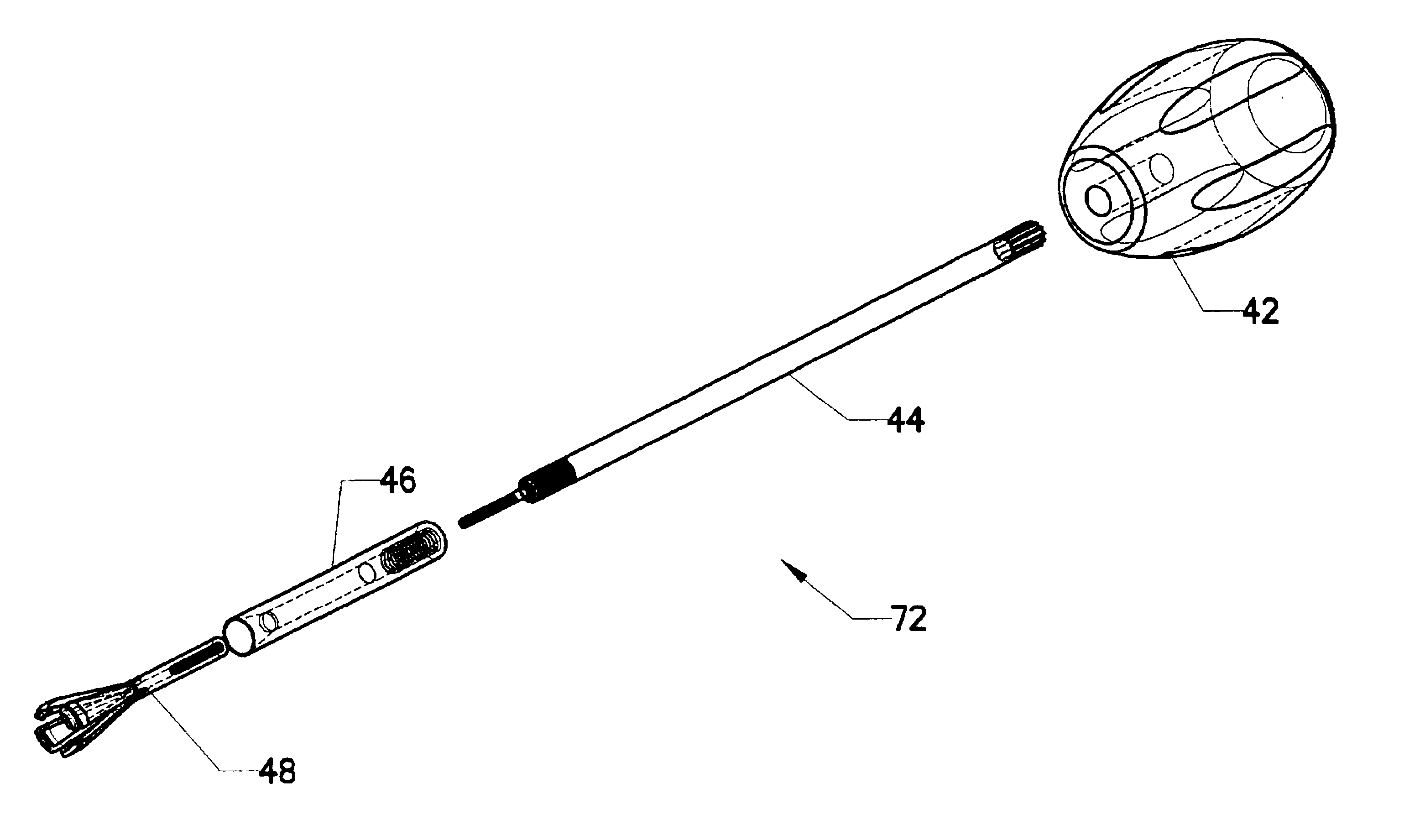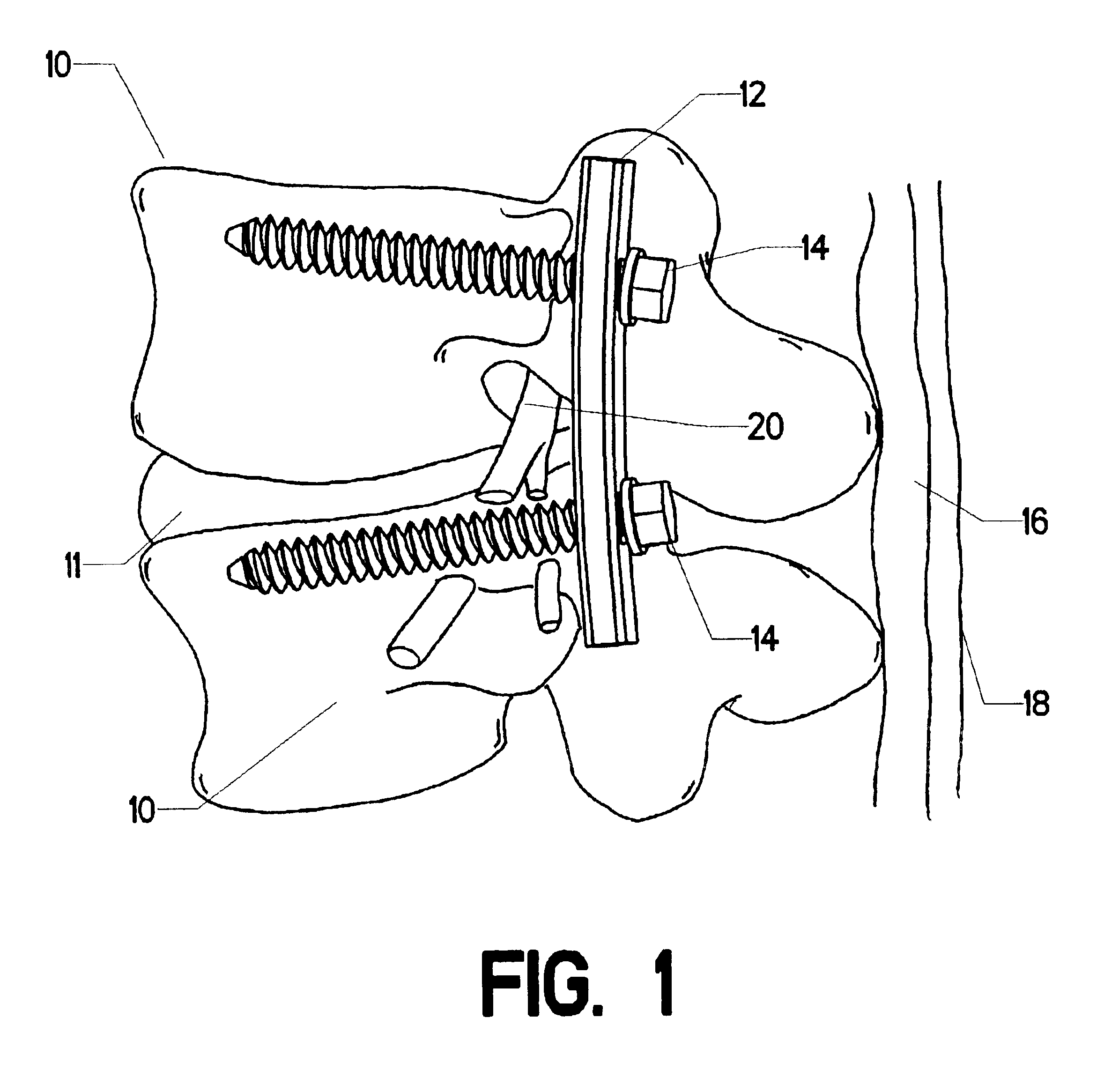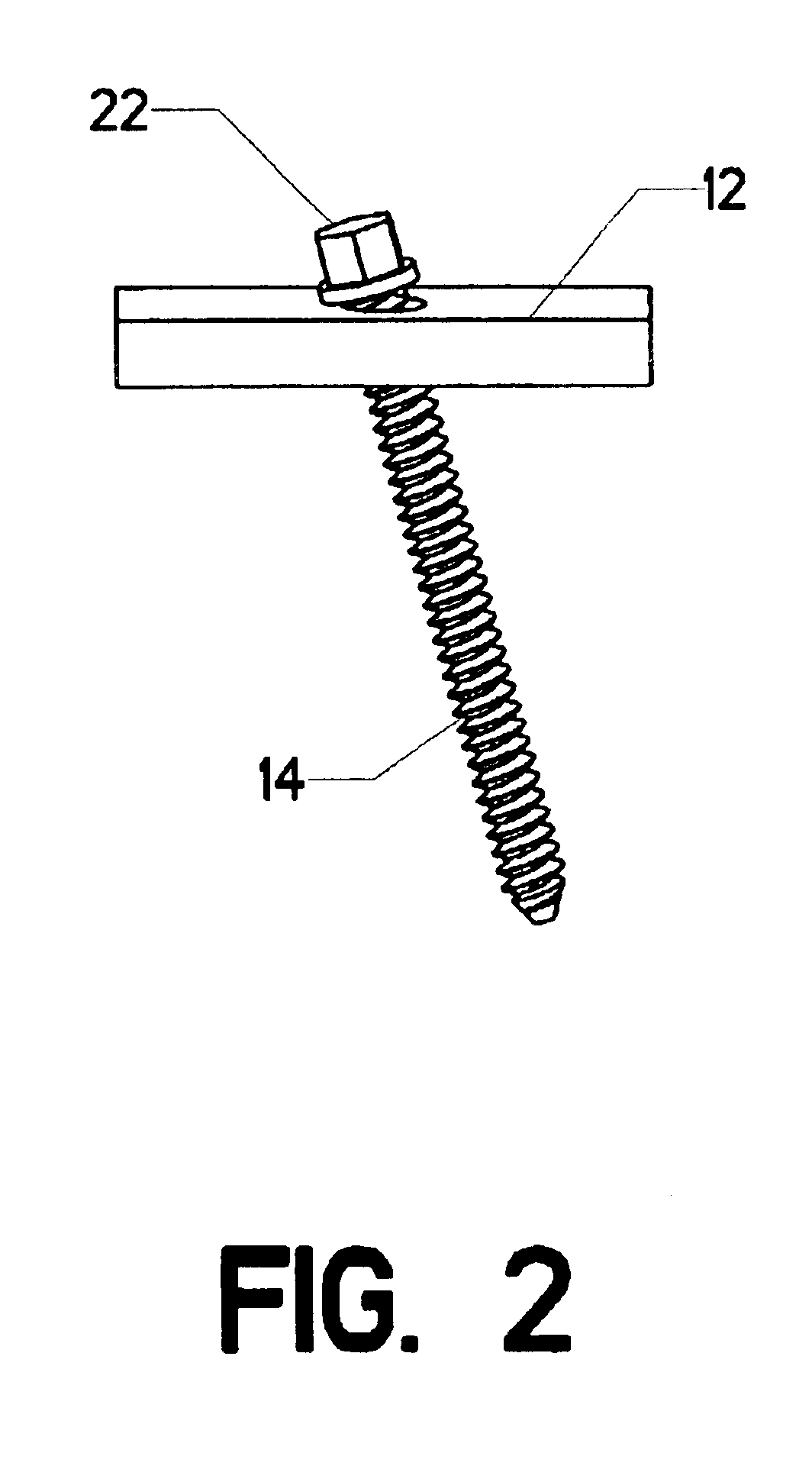Clamping screw extractor
a screw extractor and screw technology, applied in the field of mechanical fasteners and devices, can solve the problems of difficult to determine whether a particular screw is the source of neurological symptoms experienced by patients, surgeons are unable to fully visualize the structures involved, and achieve the ideal result not always achieved
- Summary
- Abstract
- Description
- Claims
- Application Information
AI Technical Summary
Benefits of technology
Problems solved by technology
Method used
Image
Examples
Embodiment Construction
The present invention is a screw extraction tool capable of accessing and removing a screw in a confined space. In order to understand the operation of the extraction tool, it is helpful to understand the operative environment in which it functions.
Returning now to FIG. 1, the objective for which the invention was primarily designed is the removal of one or more pedicle screws 14. Radiographic techniques are used to locate the suspicious pedicle screw. Turning now to FIG. 3, small incision 24 is made directly over the pedicle screw. A guide wire 84 is then placed on the screw head, with its free end extending out of the incision as shown.
Turning now to FIG. 4, first dilater tube 26 is placed in the incision by slipping it along the guide wire. First dilater tube 26 is a hollow tube having an inner diameter greater than the guide wire. By inserting it into the incision along the guide wire, the incision is dilated slightly. Next, a succession of dilator tubes, each having a slightly ...
PUM
 Login to View More
Login to View More Abstract
Description
Claims
Application Information
 Login to View More
Login to View More - R&D
- Intellectual Property
- Life Sciences
- Materials
- Tech Scout
- Unparalleled Data Quality
- Higher Quality Content
- 60% Fewer Hallucinations
Browse by: Latest US Patents, China's latest patents, Technical Efficacy Thesaurus, Application Domain, Technology Topic, Popular Technical Reports.
© 2025 PatSnap. All rights reserved.Legal|Privacy policy|Modern Slavery Act Transparency Statement|Sitemap|About US| Contact US: help@patsnap.com



